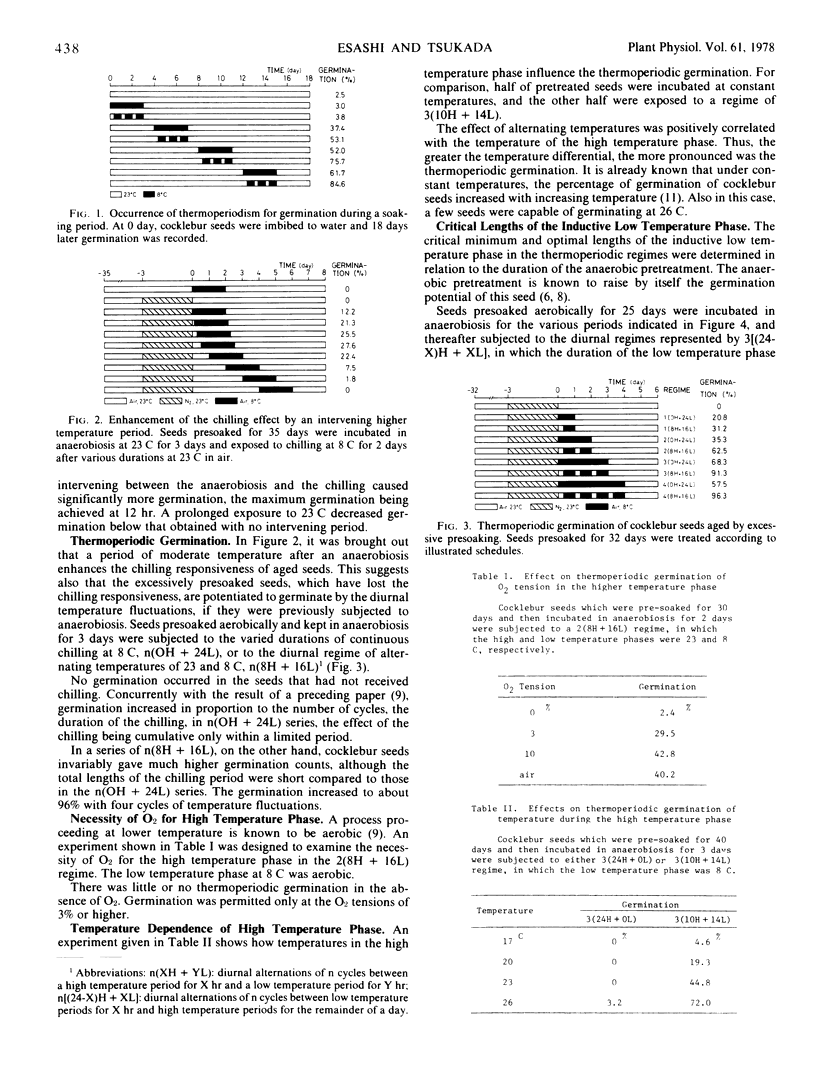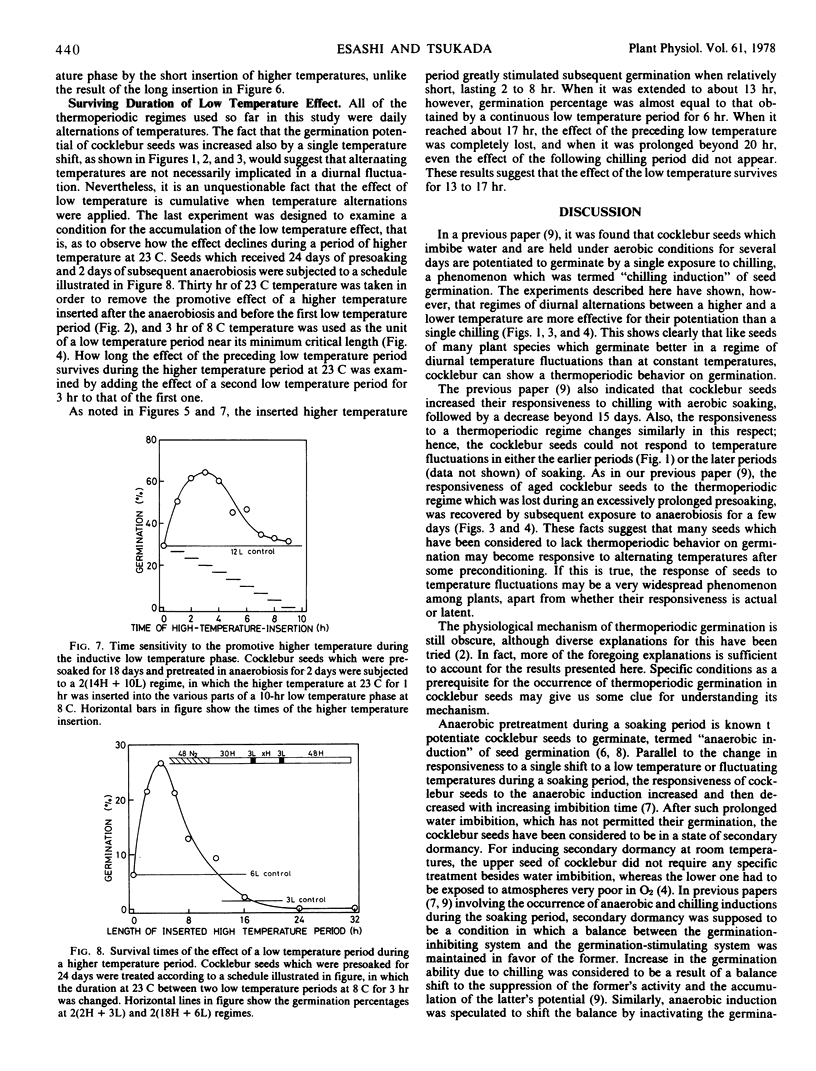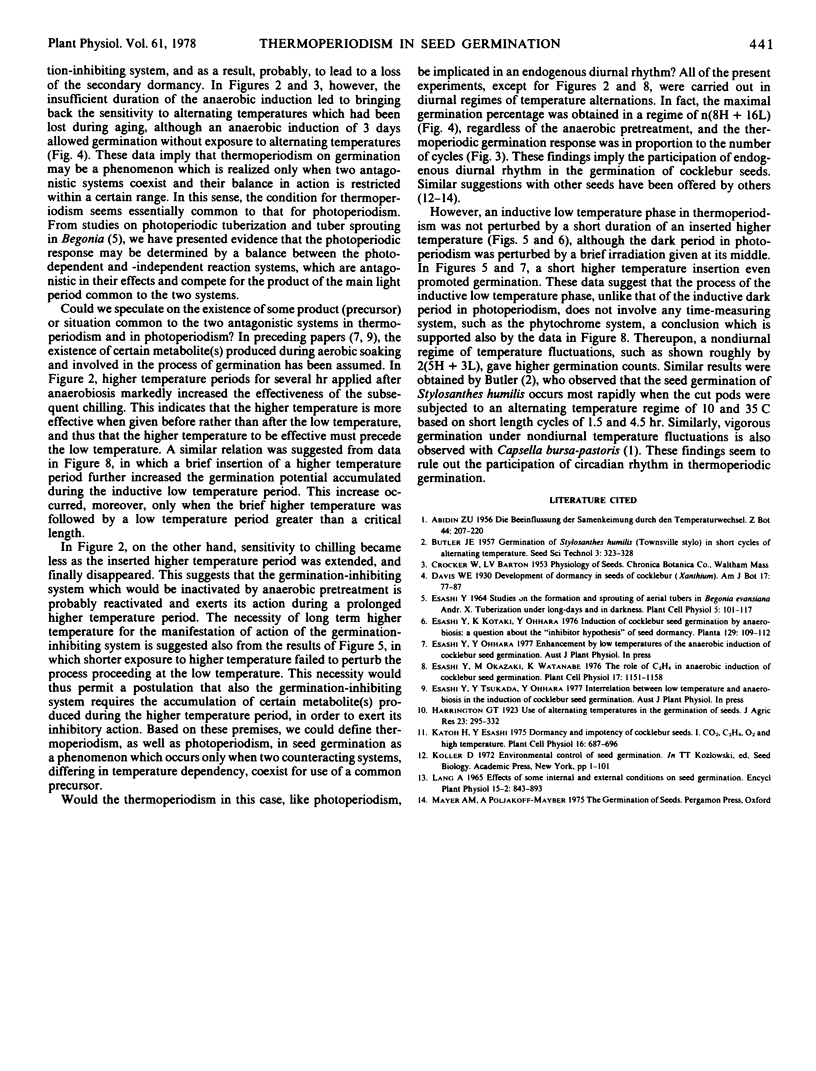Abstract
Germination potential in nondormant, upper cocklebur (Xanthium pensylvanicum Wallr.) seeds, which were incapable of germinating under constant temperatures below 25 C in air, was increased by exposure to diurnally alternating temperatures. The cocklebur seeds failed to respond to the temperature fluctuations in the beginning of water imbibition, and their responsiveness appeared only after aerobic presoaking for a limited period or after anaerobic pretreatment for 1 to 3 days.
Maximal germination was obtained after exposure to a thermoperiodic regime of 8 hours at 23 C and 16 hours at 8 C. A process occurring during the high temperature phase was aerobic and had to precede the inductive low temperature phase, its effect increasing with temperature. Critical minimum length of the inductive low temperature phase changed with the duration of a preceding anaerobiosis, for instance about 4 hours after 1 day anaerobiosis, but about 2 hours after 2 days. Percentage of subsequent germination was in proportion to the number of thermoperiodic cycles. A process of the inductive low temperature phase was not perturbed by inserting a brief higher temperature period into its phase; indeed, such insertion rather increased germination potential when performed in the earlier parts of the inductive low temperature phase. The effect of the low temperature survived for 13 to 17 hours during the higher temperature period.
Full text
PDF






